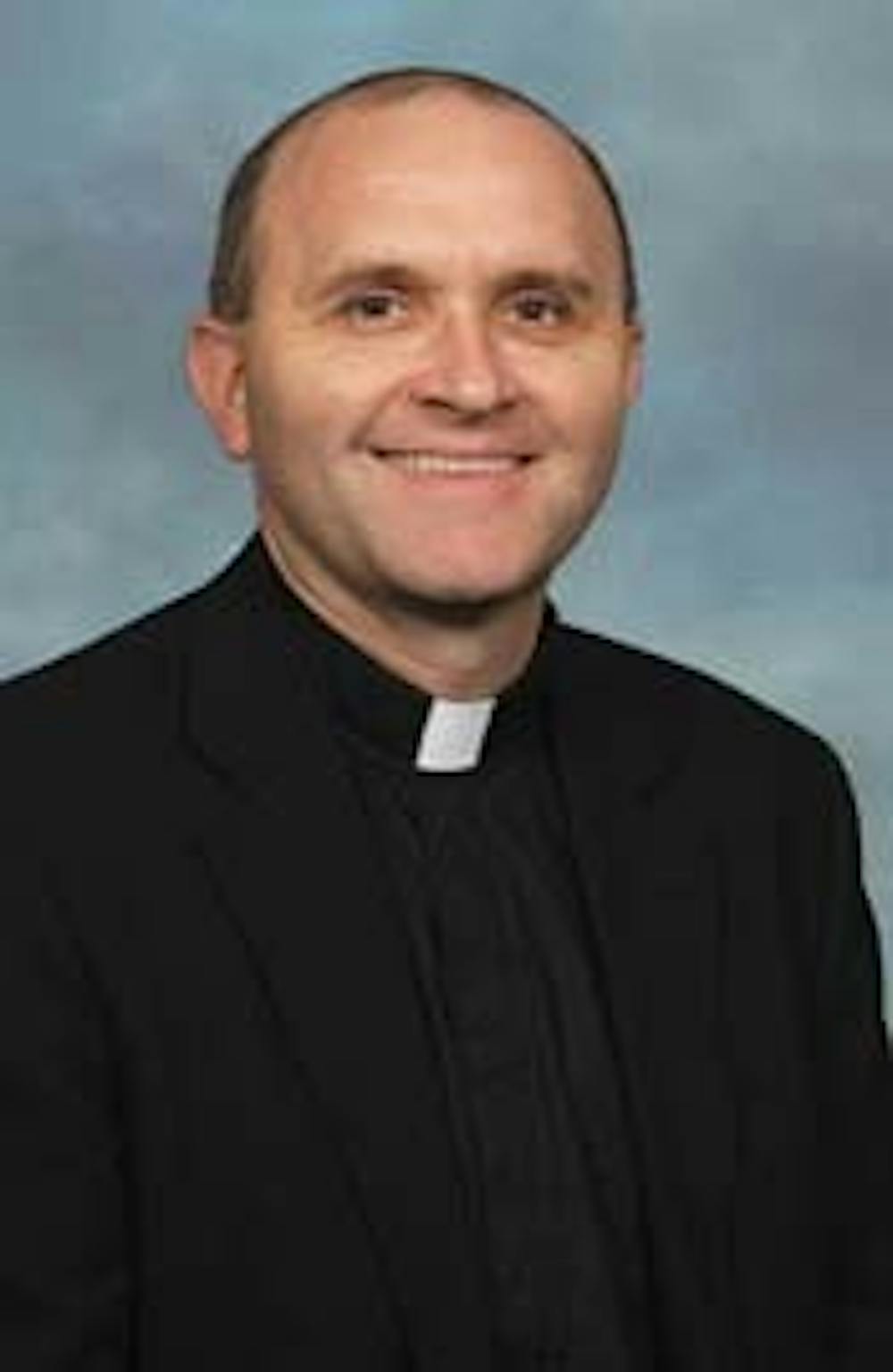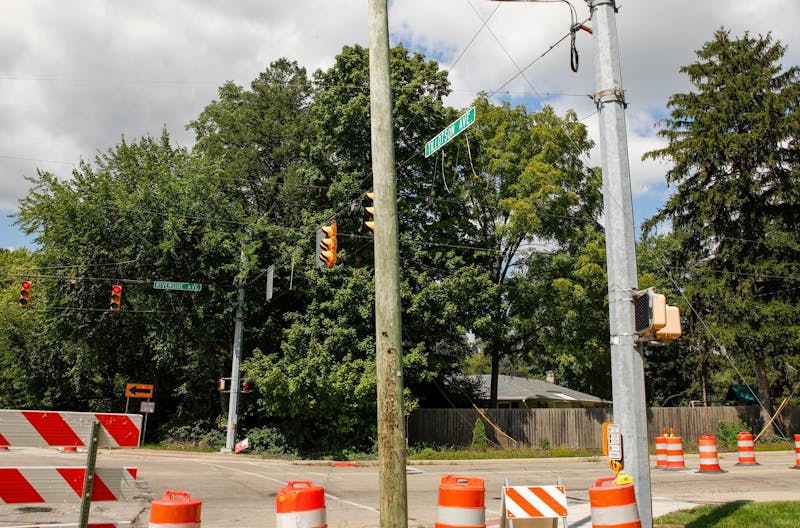The Reverend Vincent Lampert is soft-spoken and in high demand.
“I know my limitations, and I can’t help everybody,” Lampert said. “I got a phone call from China and a phone call from Japan and Norway. I can’t reach out to all those people. But you can’t dwell on that.”
Focusing on the good things in life is important for Lampert. The life of an exorcist can be difficult.
“A man once asked me, ‘what do you do after a night of exorcism?’ [and] ‘Do you spend the whole night praying?’” he said. “I said ‘no, I usually go to Dairy Queen and get a chocolate shake.’”
THE FIRST EXPERIENCE
The 49-year-old bespectacled priest presides over St. Francis and Clare Catholic Church in Greenwood, Ind., about an hour and a half southwest of Muncie.
Lampert became an ordained priest in 1991, and in doing so, he swore obedience to the bishop that he would serve under. In 2005, Lampert’s bishop appointed him to be an exorcist for the Archdiocese of Indianapolis. As part of his training, Lampert would travel to Rome to study under an advanced exorcist.
However, Lampert’s first experience with the possessed happened before he even went overseas.
One day, before receiving his training as an exorcist, Lampert received a call from a man in Richmond, Ind., asking the priest to come visit his adult son, whom he believed was possessed.
When Lampert arrived, the father thanked him for coming and took him up to the son’s bedroom. The door was locked, so the father asked the son to come out and talk with Lampert.
“He began cursing out his father,” Lampert said. “He was swearing at me and his father. So we decided to go downstairs to the kitchen.”
As Lampert and the father sat around the kitchen table discussing the situation, the two heard a deep voice break through the air.
“Get out!”
At this point, the two men went back upstairs to check on the father’s son.
“I said ‘this is Father Lampert’ and the door immediately burst open,” Lampert said. “This 6-foot-5-inch guy must have been about 300 pounds [and] was standing there.”
The man’s voice became very high, like a small child’s, before saying: “Hi, Father.”
After talking to Lampert for several minutes, the son slammed the door in Lampert’s face, saying, “I’m done with you.”
“I couldn’t do anything. The person has to want help,” Lampert said. “I kept waiting for them to get back in touch with me but they never did.”
FOUR TYPES OF DEMONIC ACTIVITY
To understand Lampert’s job, it’s important to understand that physical possession is rare. In fact, it’s one of only four types of demonic activity recognized by the Catholic Church.
While possession may be rare, Lampert said the Roman Catholic Church recognizes three other types of significant demonic activity: demonic infestation, demonic oppression and demonic obsession.
Demonic infestation has to do with demonic activity associated with a location or an object, similar to the haunting seen in the film, “Paranormal Activity.” Demonic oppression deals with physical attacks on victims caused by a demonic presence, and demonic obsession deals with a type of mental attack by demonic forces.
Then there is the infamous demonic possession. Lampert said it deals with the actual possession of a person by a demonic spirit.
“I’ve probably dealt with about five cases [in the United States],” he said. “They’re rare, maybe one out of every 5,000 cases.”
Lampert said he’s lost count on how many other cases of demonic activity he has dealt with over the years.
“I probably receive 10 phone calls a week from people all over the United States,” he said. “In my 21 years as a priest, I estimate that I spend 60 percent of my time on this ministry.”
Lampert said the church does not keep any records of how many calls he has made, but there seems to be a growing demand for people with his skills.
When Lampert was ordained an exorcist, he said he became one of 12 exorcists in the U.S. Now, he estimates there are more than 50 ordained exorcists.
Exorcist’s identities are usually kept a secret, for their own protection. He said however that he wishes to demystify the culture of exorcism.
“I think people look at the exorcist as a type of magician,” Lampert said. “Ultimately, it’s God that brings deliverance into people’s lives. I don’t have that power.”
TRAINING IN ROME
While Lampert said he has worked with five cases of possession in the states, he sat in on 40 such cases while mentoring in Rome.
“I didn’t really know what to expect,” he said. “You wonder what’s real.”
Lampert’s first case in Rome was a person who came with friends and family. Lampert said initially, the person seemed to be acting normal and showed no signs of anything out of the ordinary.
“Beforehand, the person didn’t seem possessed,” he said. “I thought ‘well, this person seems pretty normal.’”
As Lampert’s mentor began to sprinkle the patient with holy water, the patient began to react violently.
“[My mentor] picked up the holy water and there was an immediate change,” he said. “Their eyes rolled back in their head, they started foaming at the mouth — and growling and cursing and screaming at the priest.”
These are common themes during an exorcism. Screaming, convulsions and foaming at the mouth is considered normal along with a clear revulsion when confronted with holy objects such as holy water, a crucifix or the blessed purple shawl worn by the priests during an exorcism.
“One should look for those things to happen so that the battle can be fought,” Lampert said.
In the eyes of Lampert and the Catholic Church, an exorcism is just that — a battle between good and evil. It is a battle between a creator and a rebellious creation. But it’s a battle that is ultimately fruitless for the demonic side.
“I think a lot of people out there, when they think of God and they think of the devil, they place God and [Satan] on the same playing field,” he said. “But [Satan] is a creature, and a creature can never be greater than the creator. I think [Satan] would want to convince us that he is greater than he truly is.”
IS IT REAL?
Of course, it’s important to know that these are stories told by Lampert. Much like a doctor, his patients’ identities are kept a secret for their privacy.
Science points to mental health problems as the cause of many of the claims for possession. The fourth edition of the Diagnostic and Statistical Manual of Mental Disorders does not recognize demonic possession as a valid mental health disorder.
However, this does not change Lampert’s beliefs.
“There’s always critics. There always will be,” Lampert said. “But even a lack of belief doesn’t make these things not real. My job isn’t to make people believe in something. Evil can be subtle. I think the devil’s greatest victory would be for us to be convinced he doesn’t exist.”





The Daily News welcomes thoughtful discussion on all of our stories, but please keep comments civil and on-topic. Read our full guidelines here.